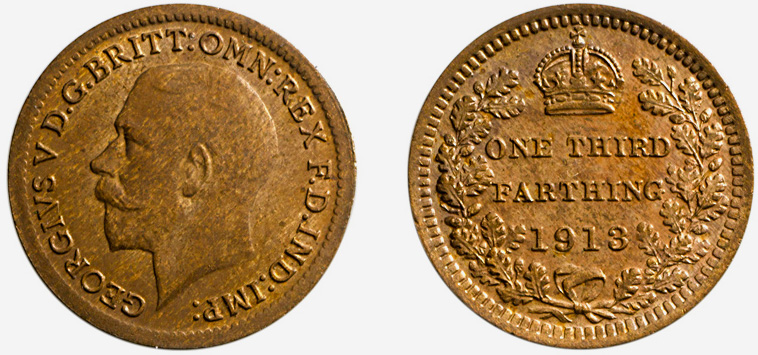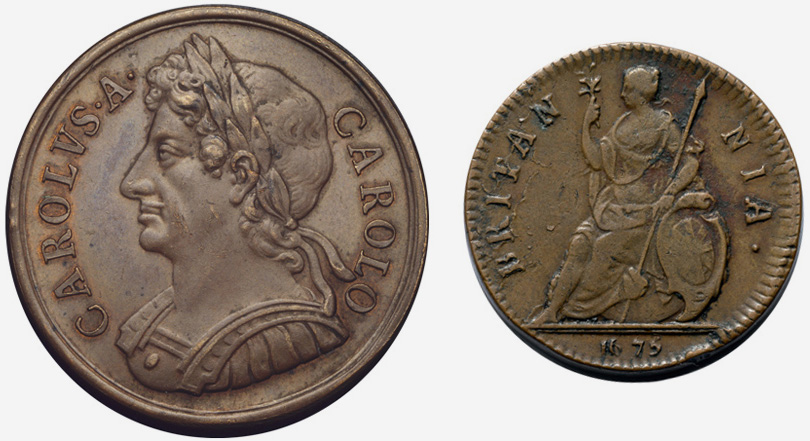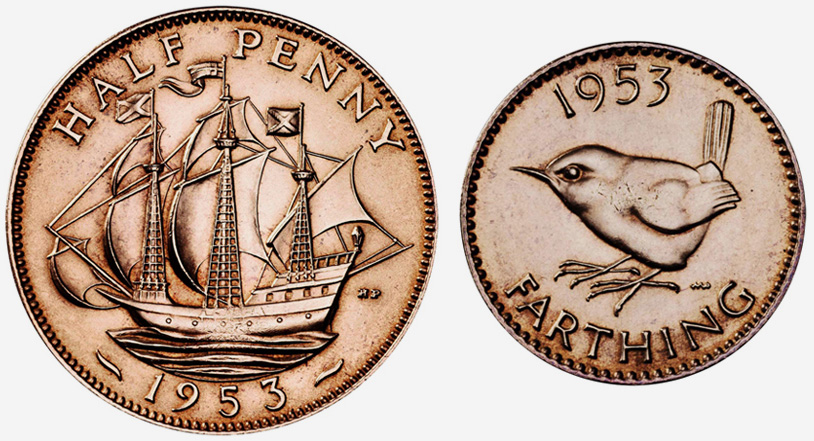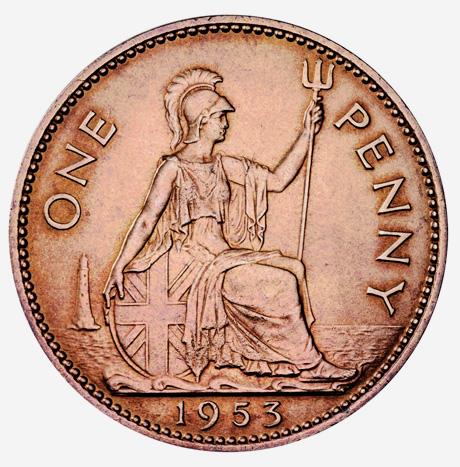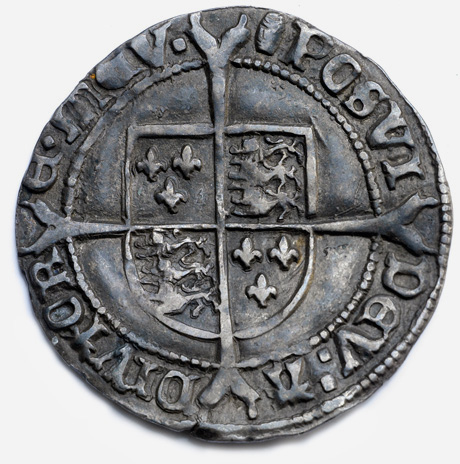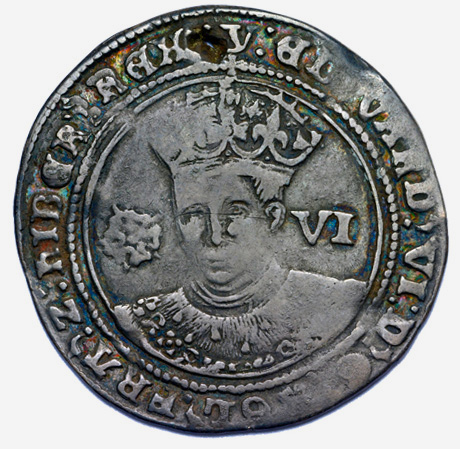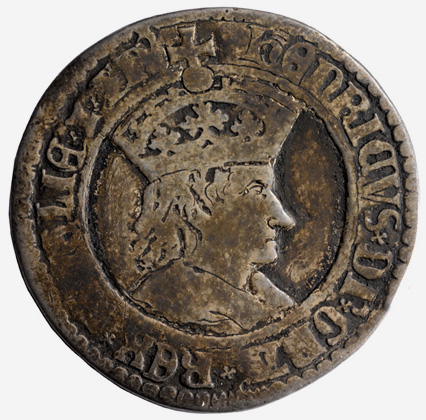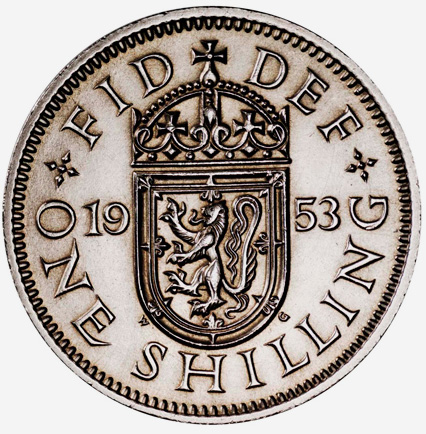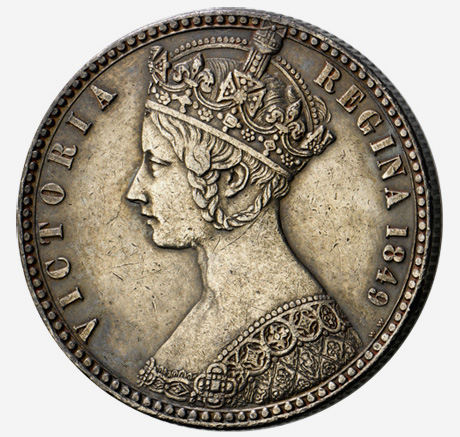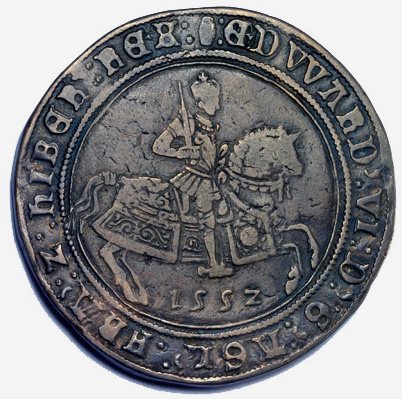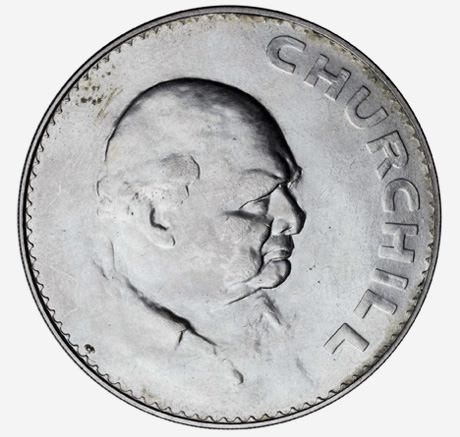Old Denominations - British Coins
By RMM | Friday, 25 September 2020
The coins that have made up the British currency have had many different names. From angels and nobles to tanners and bobs, there have been affectionate nicknames and functional descriptions.
Fractional Farthings
Half-Farthing
Copper half-farthings were minted from 1828 to 1856. At first they were intended for use in Ceylon but in 1842 they were declared legal tender in the United Kingdom. A first issue was made in 1844, but the coins were a nine days' wonder and never became popular. They were demonetised with effect from January 1, 1870.
Third-Farthing
Although part of the British imperial coinage, third-farthings were never legal tender in the United Kingdom. They were made for use in Malta, where they corresponded in value with the old Maltese grano issued before Malta became a British possession. From 1827 to 1844 they were struck in copper with the seated figure of Britannia on the reverse and from 1866 to 1913 in bronze with their value within a wreath.
Quarter-Farthing
Like the third-farthing, quarter-farthings were never legal tender in the United Kingdom, being struck between 1839 and 1853 only for use in Ceylon. They were made of copper and they show on the obverse the uncrowned portrait of Queen Victoria and on the reverse the value surmounted by a crown.
Halfpenny and Farthing
Although the silver penny had been part of the currency since the middle of the seventh century, halfpennies and farthings did not become a regular feature until the 13th century. Until then, for the purpose of change, pennies were cut into halves and quarters, so that a halfpenny was literally half a penny and a farthing a quarter or fourthing.
As with the penny, round halfpennies and farthings in silver became in due course too small to be of practical use. The silver farthing ceased to be coined under Edward VI and the silver halfpenny 100 years later during the period of the Commonwealth.
The resulting scarcity of small change prompted the striking of royal farthing tokens in copper from 1613, and in 1672 issues began of the first official copper halfpenny and farthing coins. These were handsome coins bearing on their reverse the seated figure of Britannia, who was to remain a feature of the coins until 1937, when a wren was adopted for the farthing and a sailing ship for the halfpenny.
The farthing never circulated as freely as the halfpenny; minting ceased in 1956 and farthings were demonetised at the end of 1960. The halfpenny survived until decimalisation, ceasing to be legal tender from July 31, 1969.
Penny
The penny is the great survivor of the British coinage system. Derived indirectly from the old Roman denarius, it existed as a small silver coin from Anglo-Saxon times. It survived the Norman Conquest of 1066 and continued to be struck for circulation until the middle of the 17th century, 12 pennies making a shilling and 20 shillings a pound.
Because of the rising price of silver the penny became progressively smaller and from the Restoration of Charles II in 1660 it was struck only for use as part of the Royal Maundy. Silver pennies are still struck today for the same purpose, nearly 1400 years after the penny first appeared as a small silver coin.
In 1797 the penny was struck for the first time as a large copper coin. These cartwheel pennies of 1797 proved popular and continued to circulate, along with later and slightly lighter copper pennies, until 1860.
In that year copper pennies were replaced by smaller, thinner and more durable coins in bronze. Originally known as bun pennies from Queen Victoria's portrait on the obverse, these and later issues of the bronze penny remained in circulation until the time of decimalisation in 1971.
In the form of a new penny it survived decimalisation but with its value changed to one-100th of a pound. At the same time the seated figure of Britannia, which had been a feature of all copper and bronze pennies, was replaced by a crowned portcullis as the symbol of Parliament.
Threepence
Like the sixpence, the threepenny piece first appeared as a silver coin in 1551. But in competition with the half-groat or twopenny piece, which had already been in circulation for 200 years, it led a precarious existence and was unable to establish itself firmly. Struck during the reign of Elizabeth I and then again during the Civil War, minting was resumed following the Restoration of the Monarchy in 1660. By the early part of the 18th century the coin only really survived as a part of the small annual issues of Maundy Money.
Its role changed in 1845, when it began to be issued in large numbers for general circulation. This further attempt to popularise the coin proved successful, no doubt in part because of the large and inconvenient size of the copper coinage.
During the 20th century changing habits and customs again rendered the threepenny piece unpopular, and to meet criticism of its small size a 12-sided nickel-brass piece of the same denomination but weighing almost five times as much as its silver counterpart was introduced in 1937. Its dumpiness and unusual shape aroused mixed feelings but in 1941 it had almost completely superseded its silver rival and was even being acclaimed by bus conductors and others as the easiest coin to recognise during the blackouts of the Second World War.
Twelve-sided threepenny pieces were demonetised at the end of the decimal transitional period in 1971.
Maundy Money
The Royal Maundy is an ancient ceremony which has its origin in the commandment Christ gave after washing the feet of his disciples on the day before Good Friday. The commandment, or mandatum, that ye love one another (John XIII 34) is still recalled regularly by Christian churches throughout the world and the ceremony of monarchs washing the feet of the poor, accompanied by gifts of food and clothing, can be traced back to the fourth century.
It seems to have been the custom as early as the 13th century for members of the royal family to take part in Maundy ceremonies, to distribute money and gifts, and to recall Christ's simple act of humility by washing the feet of the poor. Henry IV began the practice of relating the number of recipients of gifts to the monarch's age, and as it became the custom of the monarch to perform the ceremony, the event became known as the Royal Maundy.
In the 18th century the act of washing the feet of the poor was discontinued and in the 19th century money allowances were distributed in place of the various gifts of food and clothing.
Today's recipients of Royal Maundy, as many elderly men and as many elderly women as there are years in the sovereign's age, are chosen because of the Christian service they have given to the Church and community. At the ceremony, which takes place annually on Maundy Thursday and which the Queen has rarely missed during her long reign, she hands to each recipient two small leather string purses. One, a red purse, contains - in ordinary coinage - money in lieu of food and clothing; the other, a white purse, contains silver Maundy coins consisting of the same number of pence as the years of the monarch's age.
At first ordinary coinage was used for Maundy gifts, silver pennies alone being supplied in Tudor and Stuart times for the ceremony. Specially-struck Maundy Money started in 1662 in the reign of Charles II with an undated issue of fourpenny, threepenny, twopenny and one penny pieces. It was not until 1670 that a dated set of all four coins appeared.
Maundy Money has remained much the same since 1670, the coins used for the Maundy ceremony traditionally being struck in sterling silver. A Maundy set still consists of four small silver coins, but in 1971, at the time of decimalisation, the face values of the coins were changed from old to new pence.
Unlike the ordinary circulating coinage, the Maundy coins continue to bear the portrait of the Queen prepared by Mary Gillick for the first coins of her reign.
Sixpence
The sixpence was introduced in 1551, during the reign of Edward VI, and owed its origin to the fact that in the 1540s the coinage had been so debased that the value of the silver testoon fell from 12 pence to 6 pence.
It soon came to be a regular and popular feature of the silver coinage and, for some reason, eventually attracted to itself the friendly nickname of tanner. By the time of decimalisation it was the most popular of the old £sd coins and there were many people who regretted that a permanent place could not be found for it in the new decimal coinage. It was demonetised in 1980.
Shilling
From early Anglo-Saxon times the shilling was a unit of account, that is to say, a value used in calculations which had no corresponding coin. Its value became established as equivalent to 12 pence and there were 20 shillings to the pound.
The shilling as a coin was introduced at the beginning of the 16th century during the last years of the reign of Henry VII and until the middle of that century was known as a testoon. It was one of the first English coins to bear a real portrait of the monarch instead of the representative portrait which had served for the previous ten centuries; and it was for this reason that it derived its name of testoon from the Italian Testone or Headpiece introduced in Milan in 1474.
Convenient in size and value, the shilling became one of the popular workhorses of the silver circulation. Colloquially described for some unknown reason as a bob, it was not superseded until 1968, during the preparations for decimalisation, when issues began of the new 5p piece. Even then, being the exact decimal equivalent of 5p, they continued to circulate alongside 5p pieces until 1990, when they were finally demonetised.
Florin
Except for the short period during the reign of Edward III in the 14th century, when a gold florin was struck by the Royal Mint, the florin did not feature as part of the British coinage until 1849.
It was introduced as a concession to enthusiasts for a decimal system of coinage, being one-tenth of a pound in value. It owed its name not to any resemblance in shape or value to the gold florins of Edward III but to the fact that it was about the same size as Dutch and Austrian florins current at that time. Its first issue aroused public indignation owing to the omission of the words DEI GRATIA and FIDEI DEFENSOR from Queen Victoria's titles, the coin thereby commonly being known as the Godless or Graceless florin. This omission was soon corrected and the florin proved to be a useful addition to the silver circulation, if sometimes troublesome because of its close similarity in size to the half-crown.
During the run-up to decimalisation the florin was superseded in 1968 by the new 10p, its exact decimal equivalent, and it continued in circulation alongside the 10p until 1993.
Half-crown
Like the crown, the half-crown was introduced as a gold coin during the reign of Henry VIII and, also like the crown, under Edward VI in the year 1551 it was issued as a silver coin. The issue of gold half-crowns ceased in the 17th century, but the silver half-crown continued in circulation. In 1849 its existence was threatened by the introduction of the florin as a first step towards a decimal currency. In January 1970, over 100 years later, this threat finally became a reality and the half-crown ceased to be legal tender.
Crown
Although a coin of five shillings was struck for a few years during the reign of Edward IV, under the name of a half-ryal, it was not until the reign of Henry VIII that a gold coin known as a crown was introduced.
This first crown, which had been introduced in August 1526 with a value of four shillings and sixpence, had a very short life. In October of the same year it was superseded by a new crown having the more convenient value of five shillings.
In 1551 Edward VI issued a large silver coin of the value of five shillings and as its currency value was the same as that of the gold crown it took its name from that coin. Both gold and silver crowns continued to be struck concurrently until early in the reign of Charles II, when minting of the gold crown ceased.
By 1751 the popularity of the silver crown had declined and it evidently played a limited role in circulation. An attempt at revival was made in 1818 when Pistrucci's head of George III was combined with his classic St George and the dragon to produce what was said to be one of the handsomest coins in Europe. But the crown failed to re-establish itself as a circulating coin, and was to do so again at the end of the century despite active efforts to promote its use.
Because of its large size, however, it has found its role as a commemorative coin, particularly of royal anniversaries, and is now regularly used for this purpose. Since 1990 it has been re-denominated as a five-pound coin but the historic name crown, which can be applied to any large white-metal coin, is still used.


